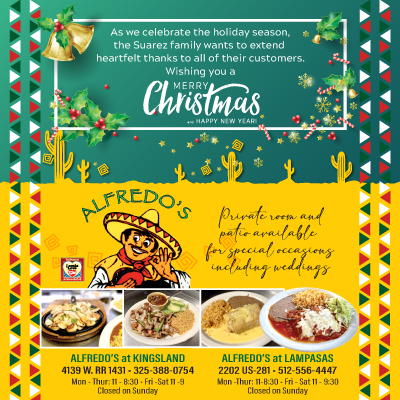
Blue jays feast on sunflower seed, their preferred food.
A well-stocked bird feeder can attract a variety of species to your backyard, but be aware: Not all birdseed is created equal. Selecting the right feed can make a big difference in which feathered friends stop by for a bite to eat.
Best in birdseed
Birdseed quality matters. Cheaper blends often contain fillers like cracked corn, oats, and milo, which many birds don’t eat. Instead, these seeds get knocked to the ground, attracting unwanted critters like raccoons and rodents.
For the best results, birdwatcher Robyn Richter of the Highland Lakes Birding and Wildflower Society recommends investing in high-quality seed.
“The number one seed that will bring birds in is sunflower seeds, both the striped and black seeds, but they can be expensive,” Richter said. “Millet is another good option, and birds like goldfinches prefer Nyjer seed, which requires a special feeder because the seeds are so tiny.”
Cardinals, chickadees, and finches thrive on sunflower seeds, while mourning doves prefer safflower seeds. For insect-eating birds, such as robins and waxwings, berries and natural fruit-bearing plants in your yard can be just as effective as feeders.
Sue’s suet
Suet is an excellent source of energy for birds, especially in colder months. Woodpeckers, nuthatches, and chickadees are among the many species that love suet cakes, which can be bought commercially or made at home.
Sue Kersey, a longtime member of the Highland Lakes Birding and Wildflower Society, shares her simple homemade suet recipe:
- 1 cup peanut butter (without artificial sweeteners)
- 1 cup lard
- 2 cups quick oats
- 1 cup flour
Melt the peanut butter and lard together, then mix in the oats and flour. Pour the mixture into a flat pan and let it cool and harden. Once set, cut into squares and store in a cool place, refrigerator, or freezer until ready to use. Suet cakes can be placed in a suet feeder year-round.
Beyond feeders
While feeders are an excellent way to attract birds, providing a water source can draw in species that don’t typically eat seeds.
“I’ll have mockingbirds come in, not because they eat seed but because they need water,” Richter said. “Birds that wouldn’t normally come to feeders will show up for a reliable water source.”
Backyard habitat also plays a major role in bringing in the birds. Native plants that produce berries and seeds will naturally sustain birds like cedar waxwings and painted buntings, the latter of which migrates from South America in the spring and is a highly sought-after sight for birdwatchers.
“A lot of people are crazy about watching birds and will travel long distances to see them,” Richter said. “If an area wants to promote tourism, a great way to do that is to promote its birds.”
Seed preferences for specific birds
- Cardinals, blue jays: sunflower seeds, peanuts, safflower seeds
- Chickadees, finches: sunflower hearts, millet, striped sunflower seeds
- Doves, sparrows: safflower seeds, millet
- Hummingbirds: sugar water (1 part sugar to 4 parts water, no red dye)













3
Thank you for your excellent article.
Sue’s Suet recipe is missing one ingredient. In addition to the quick oats and flour, 2 cups of corn meal (white or yellow) are required for proper consistency.
Thanks,
James
‘
Is there a way to keep woodpeckers off my hummingbird feeders? I have tried cutting the perches off the feeders, but that didn’t stop them. I have feeders with smaller holes, but that doesn’t work either.